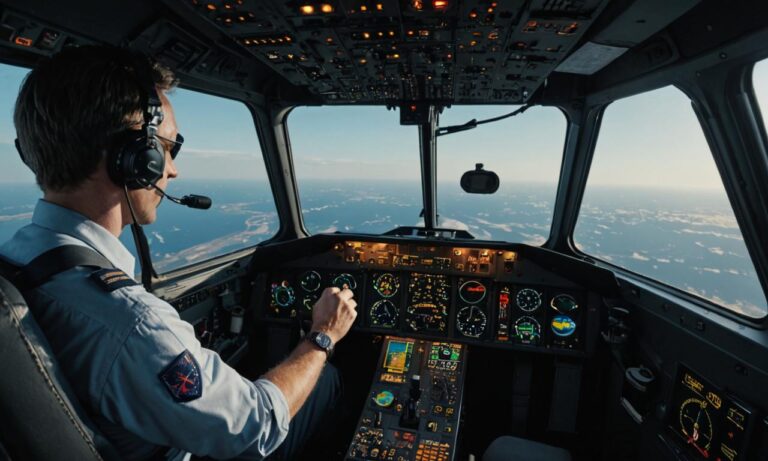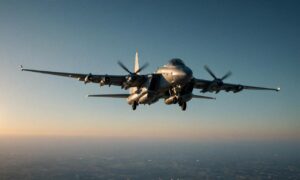Understanding the impact of pressure altitude on aircraft performance is crucial for pilots and aviation enthusiasts alike. Pressure altitude refers to the altitude above the standard atmospheric pressure level, and it significantly influences various aspects of aircraft operation, including engine performance, aerodynamics, and overall flight characteristics.
The Basics of Pressure Altitude
Pressure altitude is defined as the altitude indicated when an altimeter is set to the standard atmospheric pressure of 29.92 inches of mercury (inHg) or 1013.25 millibars (mb). It does not account for variations in local atmospheric pressure due to weather conditions. Pilots often use pressure altitude to determine the aircraft’s performance capabilities, especially when operating at higher elevations or in regions with significant changes in atmospheric pressure.
Effects on Engine Performance
Pressure altitude directly impacts engine performance by affecting air density and consequently, the amount of oxygen available for combustion. As altitude increases, air density decreases, leading to reduced engine power output. This decrease in engine power affects climb rates, cruise speeds, and overall aircraft performance. Pilots must carefully monitor pressure altitude, especially during takeoff and landing phases, to ensure optimal engine performance.
Aerodynamic Considerations
Pressure altitude also influences aerodynamic forces acting on the aircraft. At higher altitudes, where air density is lower, wings generate less lift, and control surfaces may be less effective. This can result in decreased maneuverability and increased stall speeds, requiring pilots to adjust their flying techniques accordingly. Additionally, reduced air density at higher altitudes can impact aircraft stability and responsiveness.
Effects on Aircraft Systems
Pressure altitude can affect various aircraft systems, including avionics, fuel systems, and pressurization systems. As altitude increases, the performance of electronic devices may degrade due to lower air density and reduced cooling efficiency. Fuel systems may experience changes in fuel flow rates and fuel-air mixture ratios, requiring adjustments to maintain engine performance. In pressurized aircraft, maintaining cabin pressure becomes increasingly challenging at higher altitudes, necessitating proper system management to ensure passenger comfort and safety.
Performance Planning and Safety Considerations
For pilots, understanding the effects of pressure altitude on aircraft performance is essential for flight planning and safety. By accurately assessing pressure altitude and its implications, pilots can make informed decisions regarding route selection, fuel requirements, and aircraft limitations. Proper pre-flight planning and performance calculations are critical, particularly when operating in mountainous terrain or regions with extreme weather conditions.
In conclusion, pressure altitude significantly impacts aircraft performance in various ways, including engine power, aerodynamics, and system operation. Pilots must be aware of these effects and take them into account during flight planning and execution to ensure safe and efficient operations. By understanding the relationship between pressure altitude and aircraft performance, pilots can enhance flight safety and optimize their flying experience.
Frequently Asked Questions
- How does pressure altitude affect fuel consumption?
- What precautions should pilots take when operating at high pressure altitudes?
- How does pressure altitude affect aircraft weight and balance?
Pressure altitude affects fuel consumption by altering the air density, which in turn affects the fuel-air mixture ratios. Higher altitudes with lower air density may lead to changes in fuel flow rates, requiring adjustments to maintain engine performance and fuel efficiency.
When operating at high pressure altitudes, pilots should pay attention to several factors such as reduced engine performance, decreased aerodynamic efficiency, and potential challenges with aircraft systems. It’s crucial to conduct thorough pre-flight planning, consider route alternatives, and ensure proper aircraft maintenance to mitigate risks associated with high pressure altitudes.
Pressure altitude indirectly affects aircraft weight and balance by influencing engine performance and aerodynamic forces. Pilots may need to adjust their calculations for takeoff and landing distances, as well as payload limitations, to account for the effects of pressure altitude on aircraft performance.
Effects on Aircraft Systems
Pressure altitude can have notable effects on various aircraft systems beyond those mentioned in the main text. For instance, altimeters and other instruments reliant on air pressure may require recalibration or adjustments to accurately reflect altitude readings. Additionally, aircraft with turbocharged engines may need special attention to maintain optimal performance at high pressure altitudes.
| Altitude | Effects |
|---|---|
| Low Pressure Altitude | Higher engine power output |
| High Pressure Altitude | Reduced engine power output, decreased aerodynamic efficiency |
See also:






